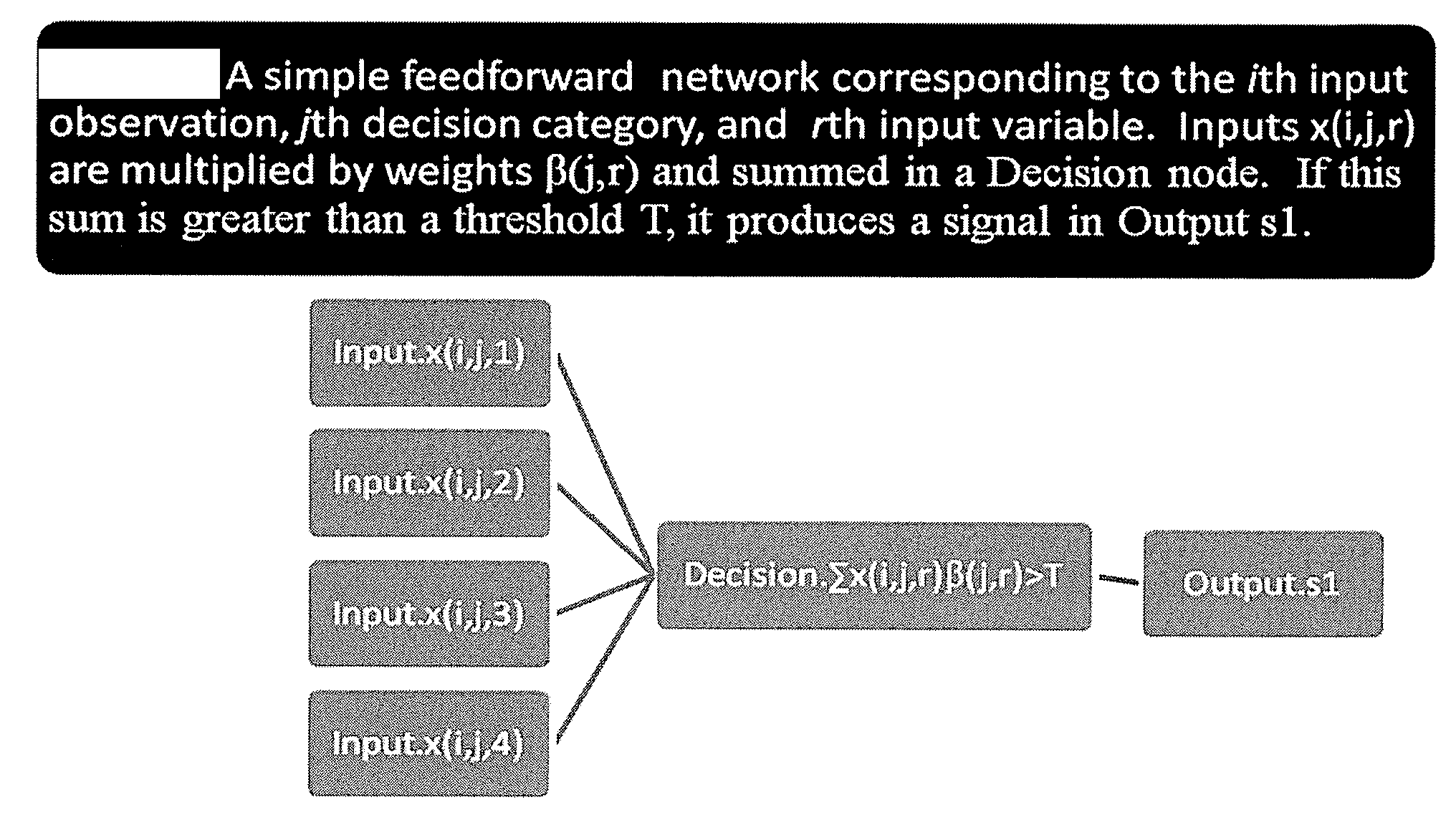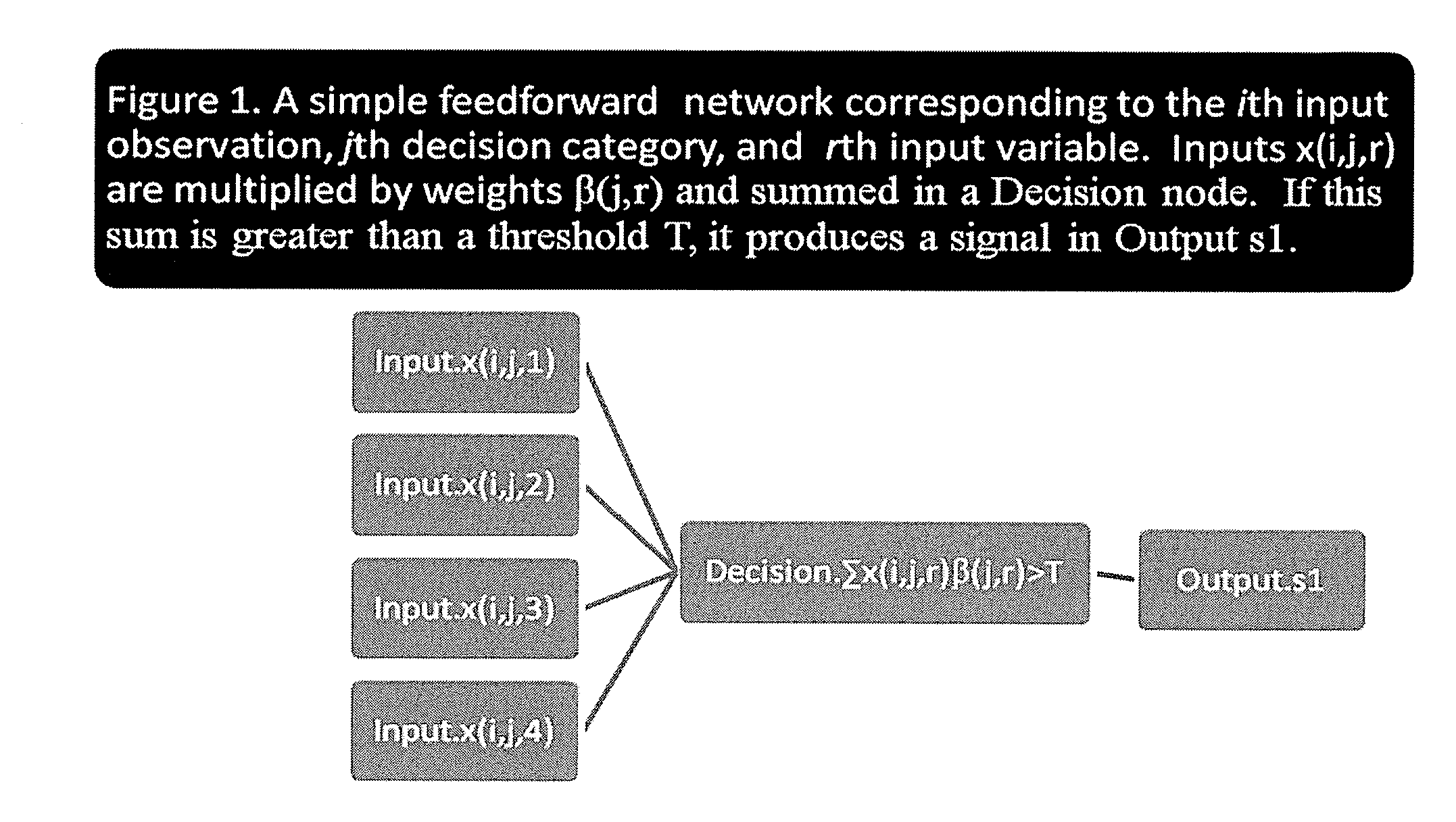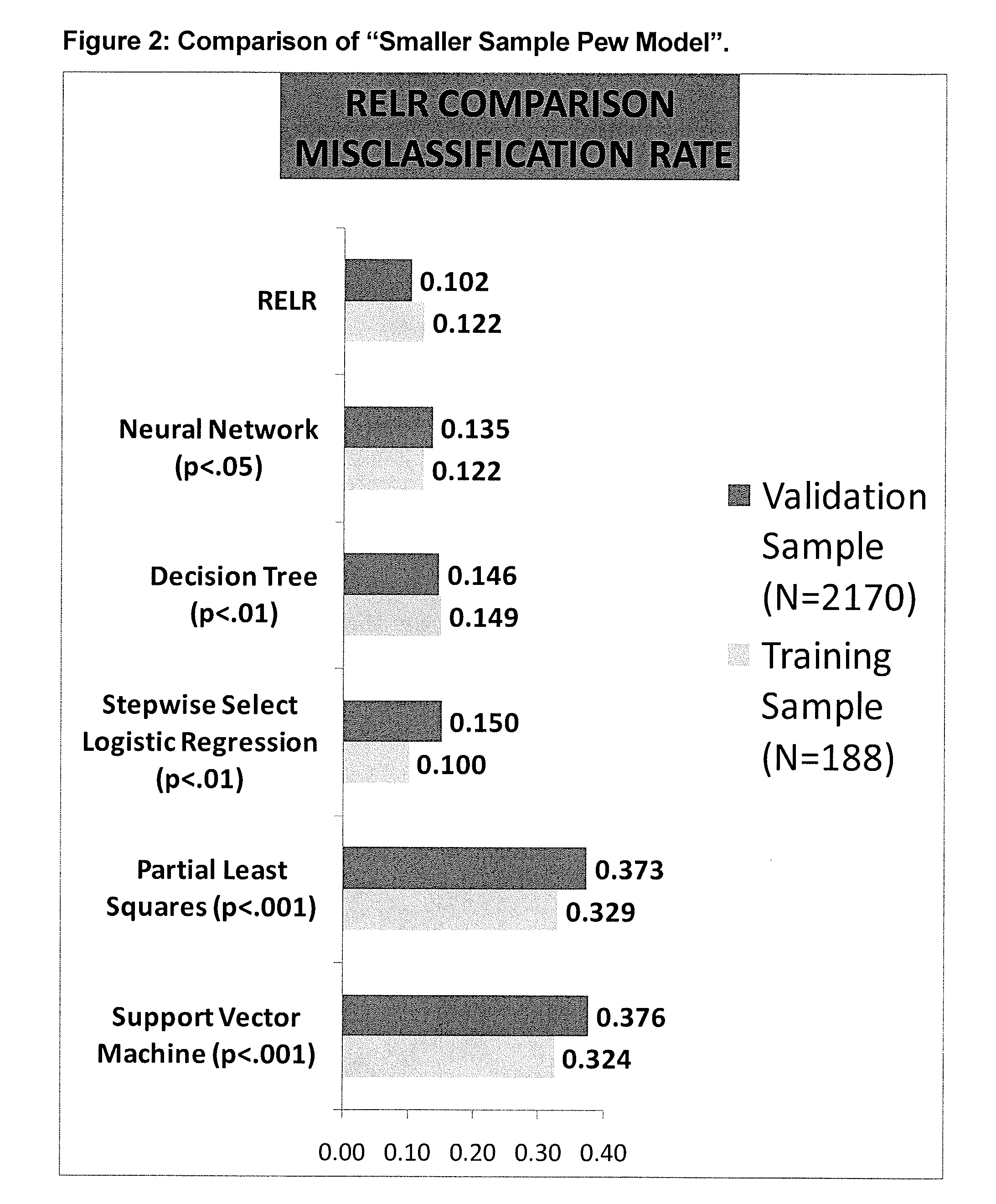Generalized reduced error logistic regression method
- Summary
- Abstract
- Description
- Claims
- Application Information
AI Technical Summary
Benefits of technology
Problems solved by technology
Method used
Image
Examples
Embodiment Construction
[0023]Classification systems typically rely upon a feed-forward network that encompasses three types of nodes: input nodes, decision nodes, and output nodes. The input node is a vector of variables that are input variables; and there can be millions of such input variables in some high dimensional complex problems. The decision node is a vector of weights that are multiplied by the input vector to compute the probability or some other indicator of a given class membership. Finally, the output node is typically an on-off signal that conveys the classification decision as to whether or not membership in a given class exists. Such nodes may be connected in a simple feed-forward network as shown in FIG. 1.
[0024]Through repetitive exposure to classification membership in training, the decision node ultimately learns to weight the values of the input variables so as to compute the probability of a given class. In this way, such networks can store classification learning through these weig...
PUM
 Login to View More
Login to View More Abstract
Description
Claims
Application Information
 Login to View More
Login to View More - R&D
- Intellectual Property
- Life Sciences
- Materials
- Tech Scout
- Unparalleled Data Quality
- Higher Quality Content
- 60% Fewer Hallucinations
Browse by: Latest US Patents, China's latest patents, Technical Efficacy Thesaurus, Application Domain, Technology Topic, Popular Technical Reports.
© 2025 PatSnap. All rights reserved.Legal|Privacy policy|Modern Slavery Act Transparency Statement|Sitemap|About US| Contact US: help@patsnap.com



